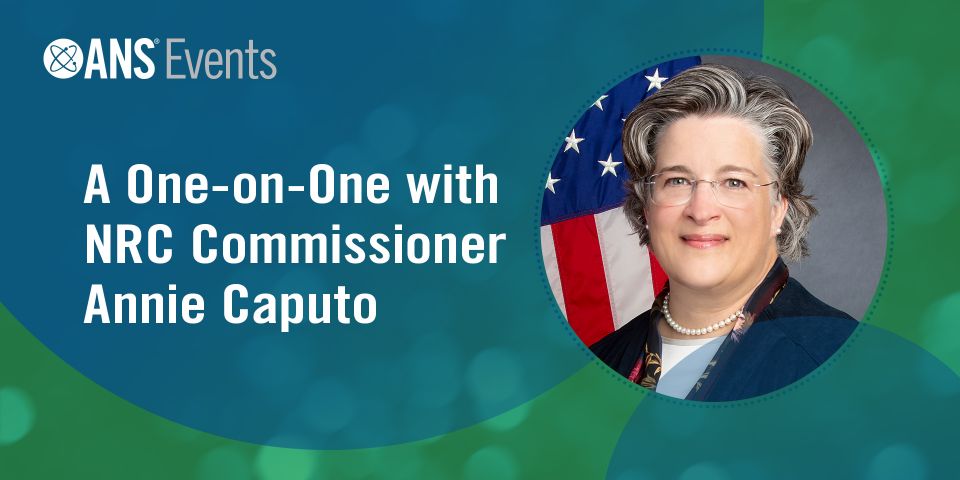President Signs Pro-Nuclear Legislation
Two bipartisan pieces of legislation modernizing America's nuclear future have recently become law. It's still a long way from pushing nuclear builds the way we need to address a host of environmental issues, but it is a good start.
The Nuclear Energy Innovation and Modernization Act (NEIMA) directs the Nuclear Regulatory Commission (NRC) to make regulations move more quickly with respect to new nuclear reactors and to establish a better and faster licensing structure for advanced nuclear reactors. It was signed by the President and became law on January 14th.
The 361 to 10 vote to approve in the House indicated a pretty high level of bipartisanship, as did the unanimous consent with a voice vote in the Senate.
NEIMA also imposes a cap on the NRC's annual fees for existing reactors, with adjustments for inflation, to ensure the operating fleet is not unjustly impacted as reactors go offline.
The other law is the Nuclear Energy Innovation Capabilities Act (NEICA) that became law last September. NEICA updates the mission and objectives of the Department of Energy's civilian nuclear energy programs, particularly supporting the deployment of advanced reactors and developing a reactor-based fast neutron source for the testing of advanced reactor fuels and materials.
Maria Korsnick, president and CEO of the Nuclear Energy Institute, described these legislations as a "significant, positive step" toward the reform of the NRC's fee collection process. "This legislation establishes a more equitable and transparent funding structure which will benefit all operating reactors and future licensees," she said. "The bill also reaffirms Congress's support for nuclear innovation by working to establish an efficient and stable regulatory structure that is prepared to license the advanced reactors of the future."
NEICA should speed up the development of advanced reactors in the United States by eliminating some of the financial and technological barriers that have previously slowed nuclear innovation to a crawl. NEICA commits the government to support the commercial nuclear sector, fostering cost-sharing and partnerships between government and the private sector that will help small companies.
This will also help the United States maintain its nuclear leadership in the world.
Marilyn Kray, president-elect of the American Nuclear Society, said the passage of the legislation was a "big win" for the nation and its nuclear community. "By reforming outdated laws, NRC will now be able to invest more freely in advanced nuclear R&D and licensing activities. This in turn will accelerate deployment of cutting-edge American nuclear systems and better prepare the next generation of nuclear engineers and technologists," she said.
The provisions in NEICA build upon the successful private-public partnerships facilitated through the Gateway for Accelerated Innovation in Nuclear (GAIN) at Idaho National Laboratory (INL) which helps accelerate the development and deployment of advanced reactor technologies.
"There are some truly transformative advanced nuclear technologies being developed in America right now and this bill just reinforces this Administration's continued efforts to revitalize the nuclear industry," said Ed McGinnis, Principal Deputy Assistant Secretary for the Office of Nuclear Energy.
Indeed, the latest designs for nuclear energy are pretty cool - small modular reactors, molten salt reactors using both uranium and thorium, fast reactors like Bill Gates is designing, high-temperature reactors, and even fusion reactors, none of which can melt-down and all of which can load-follow renewables as well as natural gas can.
Idaho National Laboratory is slated to build a fast nuclear test reactor called the Versatile Irradiation Test Reactor (VITR) that will be able to operate and test new types of nuclear reactors, particularly the fast reactors that will get ten times the energy of existing reactors and create nuclear waste that is easier to handle and isn't hot for very long.
The VITR will also end our dependence on Russia for this type of testing.
Another recent milestone occurred last week when DOE completed an environmental assessment that clears the way for the fabrication of high-assay low-enriched uranium (HALEU) fuel for advanced nuclear reactors, also at the Idaho National Laboratory. HALEU fuel is less than 20% U-235, still well-below the highly-enriched material used in weapons, but is necessary for many of the new reactors. Existing commercial reactors use fuel enriched to about 5% U-235.
Now Secretary of Energy Rick Perry has six months to provide Congress with a report assessing the capabilities of DOE to host and operate experimental advanced nuclear reactors at our national labs and other government sites. The Secretary will also submit two 10-year budget plans for nuclear research and development.
Hopefully, this legislation, with more to come, can get the United States back up to leading the world with the best technologies to address the twin scourges of global energy poverty and environmental degradation.
Feel free to leave a constructive remark or question for the author in the comment section below.





